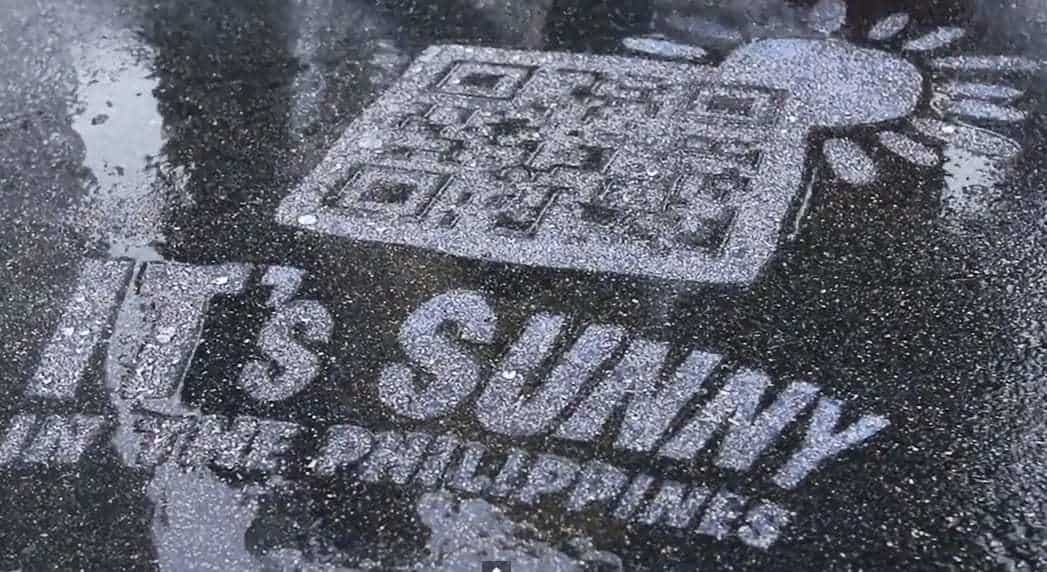The rainy weather was combined with quick response codes for this unique advertising stunt.
If these QR codes actually worked as well as their creators have claimed, then this extremely clever mobile marketing idea may represent one of the most unique and successful uses for these barcodes that has been achieved, so far.
The idea behind it was both quirky and gimmicky but it appears to have drawn the desired crowds.
The mobile marketing campaign was created by Ogilvy & Mather Group. That firm spray painted streets in Hong Kong with QR codes that appeared only when the pavement upon which they had been applied was wet from the rain. The company used water repellent spray so that when the rain was pouring down, commuters would be exposed to the message “It’s Sunny in the Philippines”, and the quick response code would be revealed.
Scanning these QR codes would offer considerable discount deals for Cebu Pacific airlines.
According to the agency behind the mobile marketing campaign, the QRcode scans caused a rise in bookings by 37 percent. If this is actually true, then this would be an astoundingly successful advertising campaign. However, for a number of reasons – two in particular – the claim is rather difficult to swallow.
The first reason is that the minimal contrast produced by the technique that was used for wet and dry pavement would make the barcodes quite challenging to scan, if not entirely impossible. The idea behind these smartphone barcodes is that the contrast makes them readable. With limited contrast, the potential is restricted.
Next, a Google short URL was used for the link in the QR codes, which makes it possible for the scanning stats to be publicly viewed. During the time of the campaign, the short URL “http://goo.gl/0PYGK8” saw only 89 scans, according to Google’s own data. Equally, though, the campaign likely drew a considerable amount of press from other media such as television and may have caused the number of bookings to rise during that period simply because of the attention that was being drawn and not through the actual scans.

